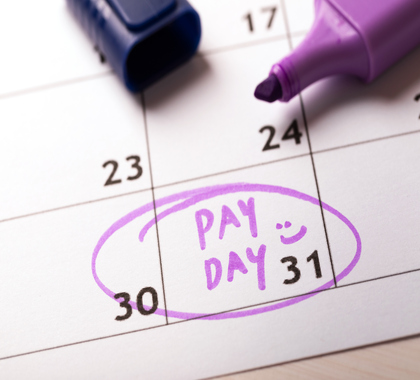The Texas House of Representatives is considering House Bill 1919, legislation that would raise the minimum wage in the Lone Star State from its current $7.25 per hour to $17 per hour, beginning January 1, 2025.
HB 1919 would initially increase the minimum wage to $13.50 per hour for the year 2024, before moving onto the jump to $17 per hour in 2025.
Historically, some state lawmakers have advocated for quick “fixes” in response to perilous economic situations. However, minimum wage increases almost always negatively impact businesses and individuals. Lawmakers in the Lone Star State would benefit from considering all of the detrimental effects associated with such hikes.
A paramount concern surrounding increases in the minimum wage is the overall effect upon employment levels. Minimum wage hikes produce unintended consequences that often inflict even more pain upon the very people they are supposed to benefit. Though well-intentioned, minimum wage hikes are a substantial reason for the utilization of self-checkout kiosks by grocery chains and fast-food restaurants, which disproportionately eliminate jobs for vulnerable and low-income individuals.
A 2017 paper from the National Bureau of Economic Research (NBER) studied the effects of minimum wage hikes, utilizing data collected from 1980 to 2015. The authors concluded that “increasing the minimum wage decreases significantly the share of automatable employment held by low-skilled workers… Our work suggests that sharp minimum wage increases in the United States in coming years will shape the types of jobs held by low-skilled workers, and create employment challenges for some of them.”
Further illustrating the negative utility of minimum wage hikes, a widely-cited joint study between the Federal Reserve and the University of California-Irvine found that 85 percent of credible studies on the subject clearly demonstrate job losses for low-skilled workers.
A study by the Congressional Budget Office (CBO) examines how increasing the federal minimum wage to $15 per hour by 2025 would adversely affect employment and household incomes. While the CBO study does find that a minimum wage increase boosts some workers’ wages, it also leads to job loss for many others, with small businesses often bearing the brunt of the economic pain. The impact on small businesses is substantial, forcing them to reallocate scarce resources from profit-generating enterprises towards higher labor costs. Often, this results in lower hiring levels, work-hour reductions, and increased prices for consumers.
In fact, a recent report from the Employment Policies Institute (EPI) found that a minimum wage hike would cost the U.S. economy approximately two million jobs. The EPI study notes that of those two million, the jobs most likely to vanish are in the restaurant and hospitality industries. Forcing small businesses in these industries to raise their labor costs would inflict even more harm upon the few that have managed to survive after the pandemic.
According to the U.S. Bureau of Labor Statistics, Texas maintains a 4.1 percent unemployment rate. With additional economic uncertainty ahead, any policy decisions that may lead to an increase in this rate should be avoided at all costs.
The country’s continued macroeconomic vulnerability is also important to consider. While the economy has re-opened and unemployment rates have improved since their pandemic lows, the labor force participation rate has not rebounded in the same way. According to the U.S. Bureau of Labor Statistics, there were still 9.8 million unfilled jobs throughout the nation on the last business day of May.
Inflation has also been a persistent problem as price increases in shelter, food, energy, and medical care continue to climb. These price increases are felt by all Americans, with Texas being no exception. In fact, 10 percent of Texans reported having a very difficult time meeting household expenses in June 2021. Comparatively, 16 percent of Texans reported having a very difficult time meeting household expenses in May 2022, reflecting a 56 percent increase over the year. Raising the minimum wage would only increase prices for consumers as businesses must account for their increased labor costs with price hikes.
Further, household inflation for the state of Texas as of May 2022 was 13.3 percent, which breaks down into an additional monthly cost per household of $673. This translates into an annualized cost per household of $8,079, according to figures provided by the United States Congress Joint Economic Committee.
Given the ongoing economic upheaval, it is unsurprising that lawmakers may be turning to minimum wage hikes to provide relief to their struggling constituents. Yet, these efforts are both ineffective and counterproductive ways of combating the problem, as they will drive up the costs of goods and services while putting many out of a job altogether.
Finally, it is important to recognize that a preponderance of small business failures would substantially decrease government revenue, as failed businesses would no longer contribute property taxes, income taxes, sales and use taxes, and various regulatory fees. While this policy might be politically popular, the downstream effects of a minimum wage increase would create significant budgetary challenges at the state and municipal levels.
Although attempts to bolster a minimum standard of living and protect low-skilled workers are laudable, the overall economic effects of arbitrary minimum wage hikes accomplish neither of those worthy goals. Uninformed minimum wage hikes, out of sync with the laws of supply and demand, would do little to lift struggling individuals and families in Texas from poverty while destroying jobs and likely increasing government dependence. Lawmakers in the Lone Star State should bear this in mind as House Bill 1919 makes its way through the legislative process.
The following documents provide more information about minimum wage laws.
Busting 5 Myths About the Minimum Wage
http://blog.heritage.org/2013/03/05/busting-5-myths-about-the-minimum-wage/
James Sherk of The Heritage Foundation debunks five myths about minimum wage hikes, often used by proponents of minimum wage laws: “A higher minimum wage would help some workers, but few of them are poor. The larger effect is hurting the ability of potential workers living in poverty to get their foot in the door of employment. A minimum wage hike might help politicians win plaudits from the press, but it wouldn’t reduce poverty rates.”
Unintended Consequences of Raising the Minimum Wage
http://mercatus.org/publication/unintended-consequences-raising-minimum-wage
Antony Davies of the Mercatus Center examines arguments for and against minimum-wage increases and presents new results comparing employment for workers with differing educational attainments.
The Negative Effects of Minimum Wage Laws
Mark Wilson of the Cato Institute reviews the economic models used to understand minimum wage laws and examines available empirical evidence. Wilson describes how most of the academic evidence shows minimum wage laws have negative effects, and he discusses why some studies produced seemingly positive results.
The Effects on Employment and Family Income of Increasing the Federal Minimum Wage
https://www.cbo.gov/system/files/2019-07/CBO-55410-MinimumWage2019.pdf
The Congressional Budget Office examines how increasing the federal minimum wage to $10, $12, or $15 per hour by 2025 would affect employment and family income across the nation. This shows that while minimum wage increases will provide some level of raised wages for some individuals, it will also lead to many workers across the nation losing their jobs.
Two-thirds of Americans Favor Raising the Federal Minimum Wage to $15 an Hour
The Pew Research Center conducted a survey in the spring of 2020 regarding the public approval of raising the federal minimum wage to $15 an hour. This shows the overwhelming trend of many across the nation believing that minimum wage increases are a viable way to pull Americans out of poverty.


